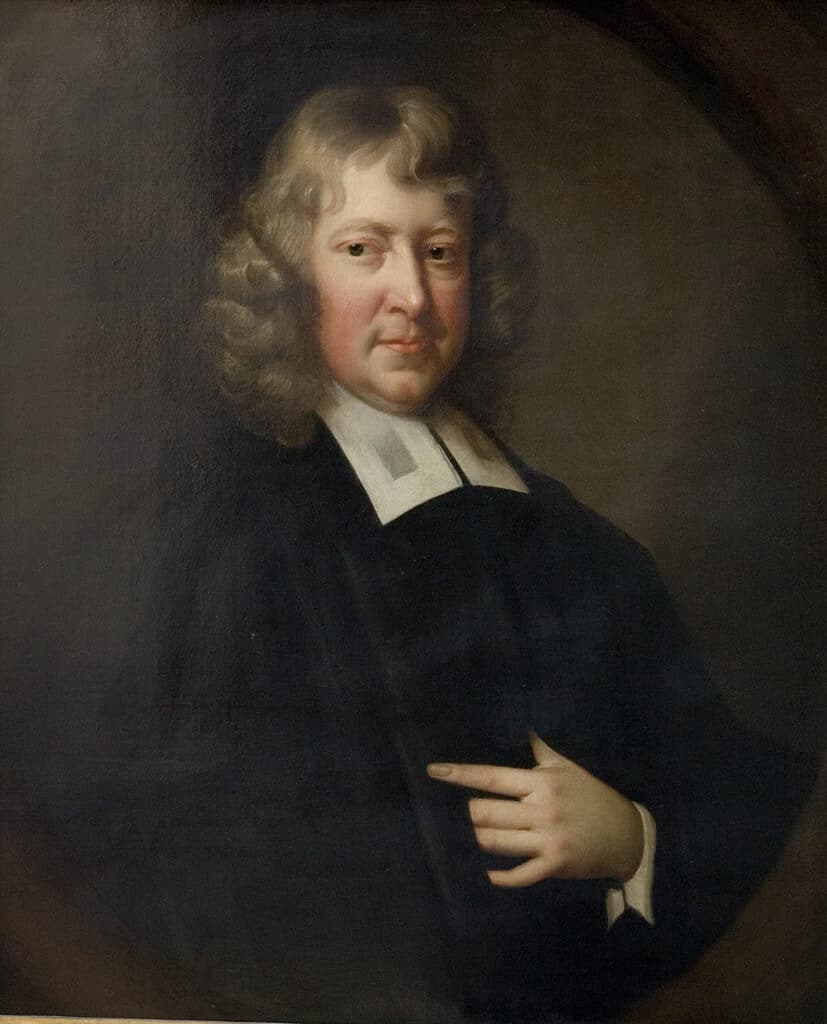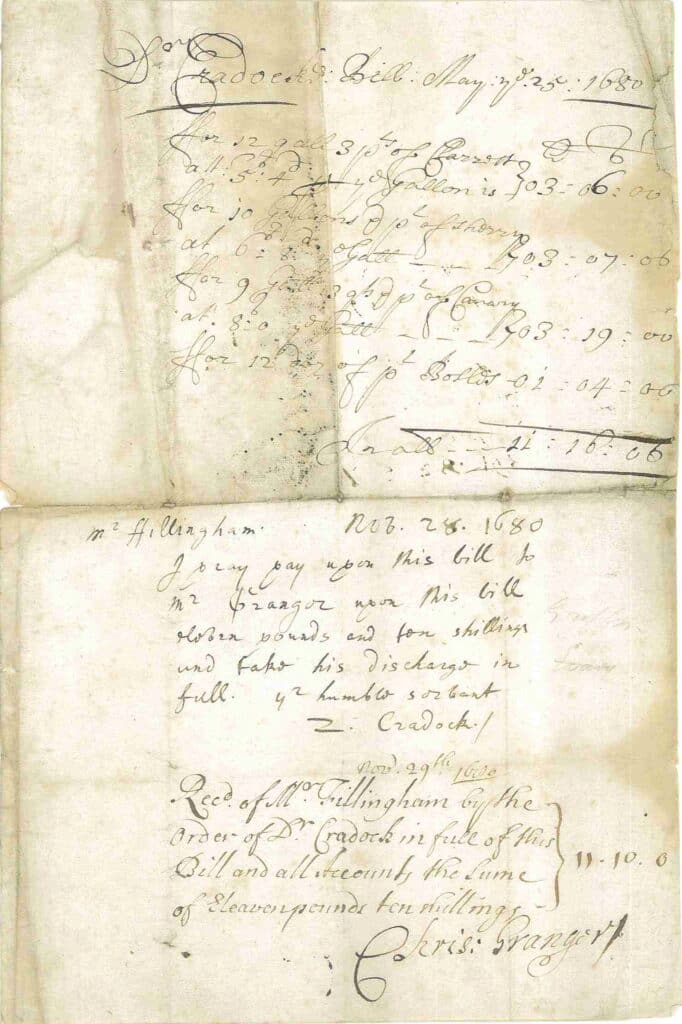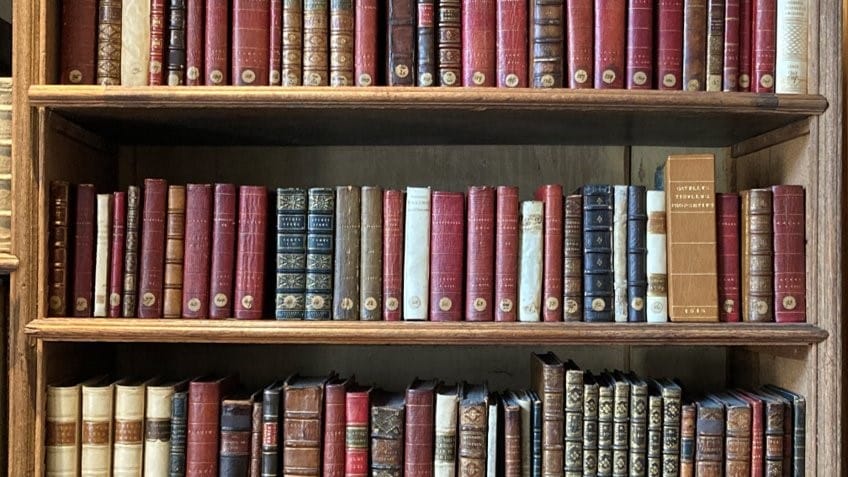Known as canary in Elizabethan England, malmsey was a sweet fortified white wine made on the Canary Islands since the 15th century. It was the go-to drink for the upper echelons of British society for more than 150 years, until trade suddenly ended in the 1680s. It is mentioned in 3 of Shakespeare’s plays, with Mistress Quickly in Henry IV (part II) declaring “you have drunk too much canaries; and that’s a marvellous searching wine”. Ben Johnson, poet laureate in 1630, was paid in part with a large barrel or tierce of canary, holding 336 pints.
Made from the malvasia grapes, malmsey is thought to have its origins in Ancient Greece, and first arrived in Britain in the late 15th century. An early mention of malmsey in the College Archives is 4 December 1458, in a lease of a tavern in Sandwich, Kent. The new tenant promises to pay the owner, a vintner, £5 per butt for malmsey supplied and £6 13s 4d for any red or white wine supplied [ECR 49/318/47]. George, Duke of Clarence, the treacherous brother of Edward IV, is popularly believed to have been drowned in a barrel of it in 1478. By 1570, some 20 million litres a year were being imported. In 1665, the London-based Canary Company was granted a royal charter giving it a monopoly on the import of wines from the Canaries, an attempt by the Privy Council to lower the purchase price of this luxurious commodity. At this period, Canary wine was one of the most expensive wines available, at double the cost of claret. The producers of this favoured tipple reacted in anger to the restrictions placed on imports to England, smashing barrels intended for sale there and threatening the Company. England retaliated by banning the import of canary and swapping to its rival, madeira, made by Portugal, the home country of their new Queen, Catherine of Braganza. Although trade was later permitted, malmsey never recovered its position, and eventually trade stopped altogether.

In a recent addition to the archives, a bill for the purchase of wine in 1680 by Zachory Cradock, Provost, we see Cradock purchase 12 gallons 3 pints of claret at 5s 4d per gallon, 10 gallons of sherry at 6s 8d per gallon, and 9 gallons of canary at 8s per gallon [COLL P 20/1]. As each gallon represents 8 pints, clearly Mr Cradock liked a tipple or two!

Eleanor Hoare, College Archivist



